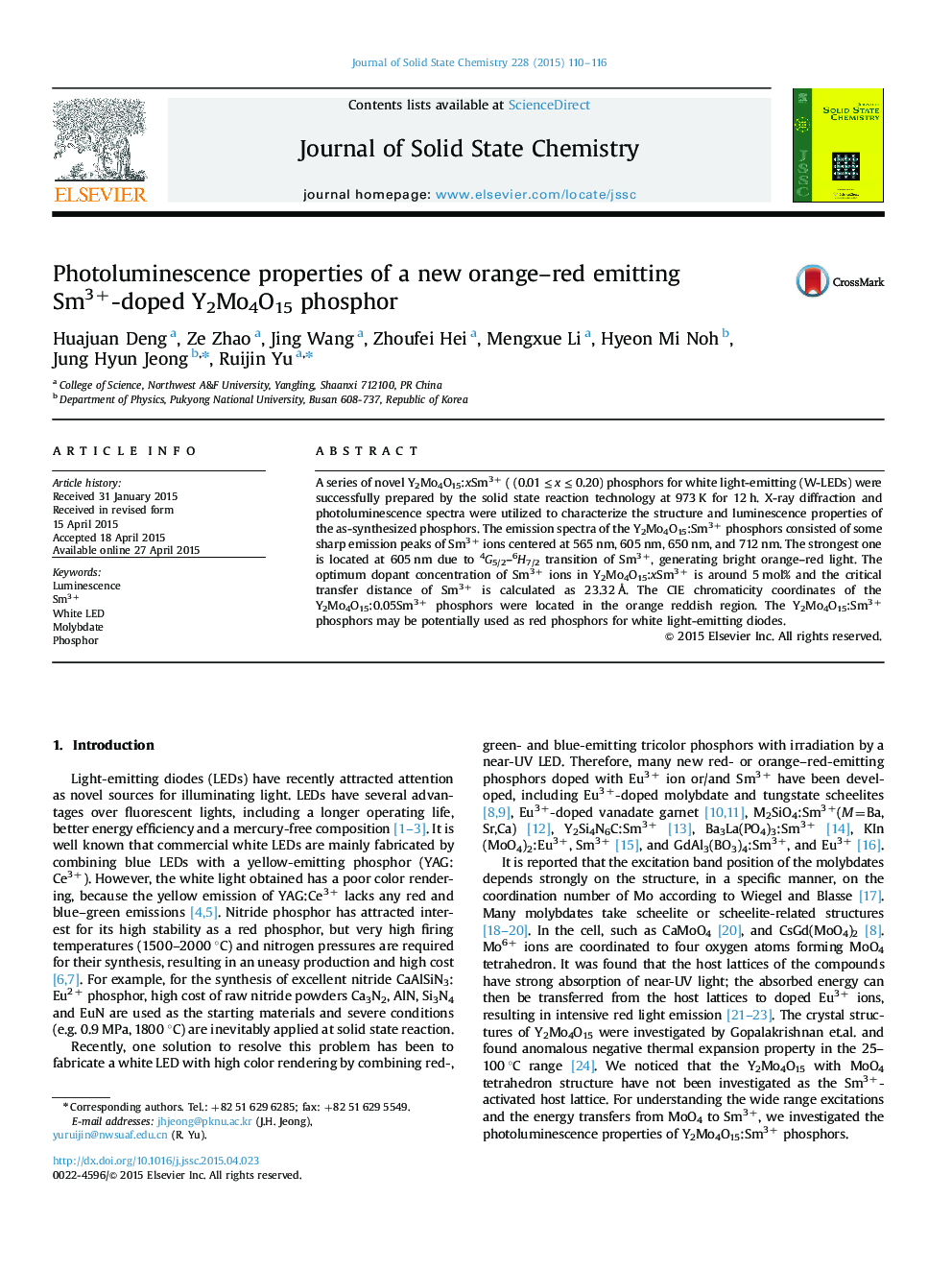| Article ID | Journal | Published Year | Pages | File Type |
|---|---|---|---|---|
| 1331495 | Journal of Solid State Chemistry | 2015 | 7 Pages |
•An orange–red emitting Y2Mo4O15:Sm3+ phosphor has been firstly synthesized.•Their structures, luminescent properties have also been investigated.•The optical absorption edge for the molybdate lies around 325 nm.•The CIE chromaticity coordinates were located in the orange reddish region.
A series of novel Y2Mo4O15:xSm3+ ( (0.01 ≤ x ≤ 0.20) phosphors for white light-emitting (W-LEDs) were successfully prepared by the solid state reaction technology at 973 K for 12 h. X-ray diffraction and photoluminescence spectra were utilized to characterize the structure and luminescence properties of the as-synthesized phosphors. The emission spectra of the Y2Mo4O15:Sm3+ phosphors consisted of some sharp emission peaks of Sm3+ ions centered at 565 nm, 605 nm, 650 nm, and 712 nm. The strongest one is located at 605 nm due to 4G5/2–6H7/2 transition of Sm3+, generating bright orange–red light. The optimum dopant concentration of Sm3+ ions in Y2Mo4O15:xSm3+ is around 5 mol% and the critical transfer distance of Sm3+ is calculated as 23.32 Å. The CIE chromaticity coordinates of the Y2Mo4O15:0.05Sm3+ phosphors were located in the orange reddish region. The Y2Mo4O15:Sm3+ phosphors may be potentially used as red phosphors for white light-emitting diodes.
Graphical abstractThe excitation spectrum of Y2Mo4O15:Sm3+ is composed of a broad band and some sharp f–f transitions. Under 407 nm excitation, the phosphor presents some sharp emission peaks of Sm3+ ions.Figure optionsDownload full-size imageDownload as PowerPoint slide
